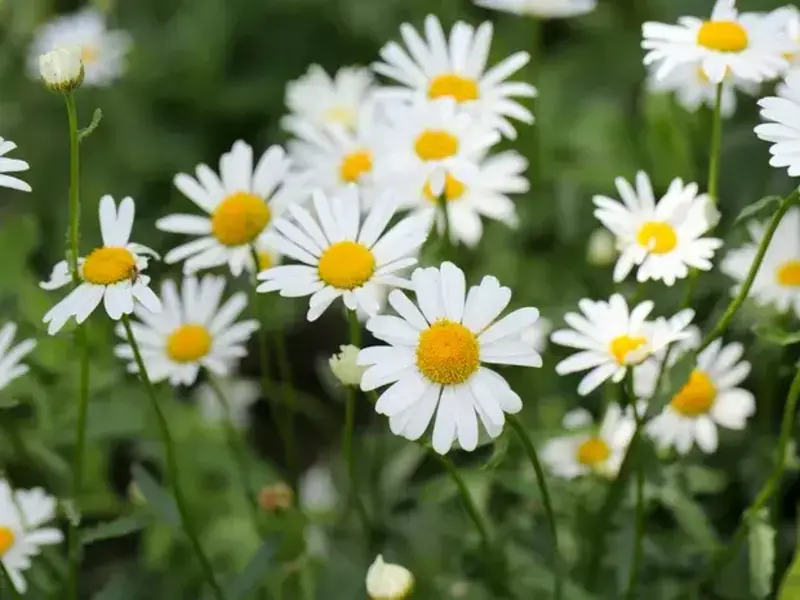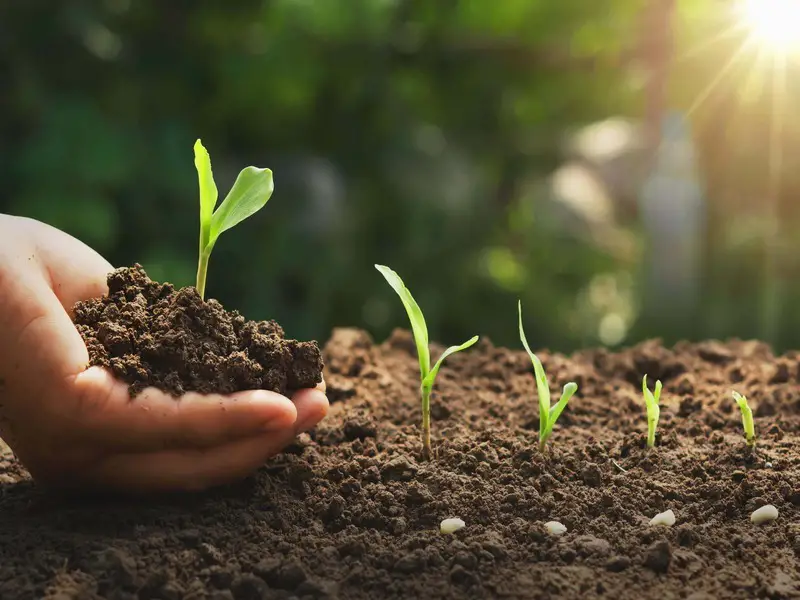Are you looking for a way to brighten up your garden with a burst of color? Look no further than daisies! Daisies are easy to grow, come in a variety of colors, and can be planted in a variety of settings. In this article, we’ll explore the ins and outs of how to plant daisies and have a colorful garden.
Introduction
Daisies are a classic flower that have been around for centuries. They are known for their simple beauty and cheerful appearance. With a little bit of knowledge and some hard work, you too can have a garden full of vibrant daisies.
Why Choose Daisies?
Before we dive into how to plant daisies, let’s take a moment to explore why daisies are a great choice for any garden.

Versatility
When it comes to versatility, daisies are hard to beat. These charming flowers can be used in a wide variety of garden settings, making them a popular choice for gardeners of all skill levels.
One of the great things about daisies is their adaptability to different growing conditions. They can thrive in a range of soil types, from sandy to clay to loamy soil. This means that no matter what type of soil you have in your garden, you can still enjoy the beauty of daisies.
Daisies are also extremely versatile in terms of how they can be planted. They can be grown in traditional garden beds, but they also work well in window boxes, hanging baskets, and containers. This makes them a great choice for gardeners with limited space or those who want to add a pop of color to a balcony or patio.
Another benefit of daisies’ versatility is that they can be used in a variety of garden styles. They work well in both formal and informal gardens, and can be used to create a naturalistic or more structured look. Their simple, cheerful flowers can also be mixed with other plants to create a colorful and dynamic garden design.
Overall, daisies are a great choice for anyone looking for a versatile and easy-to-grow flower. Whether you’re an experienced gardener or just starting out, daisies are sure to bring a touch of joy and beauty to your garden.
Low Maintenance
If you’re looking for a flower that is easy to care for and requires little maintenance, then daisies are the perfect choice. These cheerful flowers are known for their hardiness and adaptability, making them a popular choice for gardeners of all skill levels.
One of the great things about daisies is that they don’t require a lot of special attention or care. They can thrive in a variety of soil types and don’t require a lot of fertilizer or watering. In fact, over-watering can actually be harmful to daisies, so it’s important to let the soil dry out between watering sessions.
Daisies are also very hardy and can withstand a variety of weather conditions. They can tolerate both heat and cold, and are known for their ability to bounce back quickly after a period of neglect or adverse weather.
Another benefit of daisies’ low maintenance nature is that they are relatively pest-resistant. While some pests may be attracted to daisies, they are generally not a major problem and can be easily controlled with organic pest control methods.
Long Blooming Period
If you’re looking for a flower that will provide long-lasting color to your garden, then daisies are an excellent choice. These cheerful flowers have a long blooming period, which means that they will provide color and beauty to your garden for an extended period of time.
Daisies typically bloom from late spring to early fall, depending on the variety and growing conditions. During this time, they produce a profusion of charming, cheerful flowers that are sure to brighten up any garden. With their bright yellow centers and delicate white petals, daisies are a classic choice for gardeners who want to add a touch of timeless beauty to their outdoor space.
One of the great things about daisies’ long blooming period is that they provide a steady source of nectar for pollinators such as bees and butterflies. This can help support the health of your garden ecosystem, and contribute to the overall health and vitality of your garden.
In addition to their long blooming period, daisies are also very easy to deadhead, which means that you can prolong their blooming period even further. Deadheading is the process of removing spent flowers from the plant, which encourages the plant to produce more flowers. By deadheading your daisies regularly, you can help ensure that they continue to bloom well into the fall.
Learn How to Plant Daisies and Have a Colorful Garden
Now that we’ve explored why daisies are a great choice for any garden, let’s dive into how to plant them.
Step 1: Choose the Right Location
When it comes to planting daisies, the first and most important step is to choose the right location. Daisies are a sun-loving flower, and they require at least six hours of direct sunlight per day in order to thrive. So, when choosing a spot in your garden to plant your daisies, look for an area that receives plenty of sunshine throughout the day.
In addition to sunlight, daisies also require well-draining soil in order to grow properly. This is because they are susceptible to root rot and other fungal diseases if their roots are constantly sitting in wet soil. So, it’s important to choose an area of your garden that has good drainage, and to amend the soil if necessary to improve its drainage.
If you’re not sure whether the soil in your chosen location is well-draining, you can perform a simple test to find out. Dig a small hole in the soil and fill it with water. If the water drains away within an hour, then the soil has good drainage. If the water remains in the hole for longer than an hour, then the soil is poorly draining and may need to be amended with organic matter such as compost or well-rotted manure.
Once you’ve identified a suitable location for your daisies, it’s time to prepare the soil for planting. Remove any weeds or debris from the area, and loosen the soil to a depth of about 6-8 inches. This will help to aerate the soil and make it easier for your daisies to establish their roots.
By taking the time to choose the right location for your daisies, and preparing the soil properly, you’ll be setting them up for success and ensuring that they have the best possible start in life.
Step 2: Prepare the Soil
Once you’ve identified the right location for your daisies, the next step is to prepare the soil. Preparing the soil properly will help to create a healthy environment for your daisy plants to grow and thrive.
The first thing you should do is clear the area of any weeds, rocks, or other debris that may be present. This will ensure that your daisy plants have access to all of the nutrients and resources they need to grow strong and healthy.
Next, dig a hole that is twice as wide as the root ball of your daisy plant. The hole should be deep enough so that the top of the root ball sits just below the surface of the soil. This will help to prevent the roots from drying out or becoming waterlogged.
Once you’ve dug the hole, mix in some compost or other organic matter to help improve the quality of the soil. This will help to provide your daisy plants with the nutrients they need to grow strong and healthy.
Organic matter can come in many different forms, including compost, well-rotted manure, leaf mold, and more. You can either purchase organic matter from a garden center, or you can make your own compost at home using kitchen scraps, yard waste, and other organic materials.
Mix the organic matter into the soil using a garden fork or a tiller. This will help to incorporate the organic matter evenly throughout the soil, creating a healthy and nutrient-rich growing environment for your daisy plants.
By taking the time to properly prepare the soil, you’ll be giving your daisy plants the best possible start in life. This will help them to grow strong and healthy, and to produce beautiful, colorful blooms throughout the growing season.
Step 3: Plant the Daisy
Once you have prepared the soil, it’s time to plant your daisy. Planting your daisy properly will help to ensure that it establishes itself quickly and grows into a healthy, thriving plant.
To begin, gently remove the daisy plant from its container or packaging. Carefully loosen the roots of the plant, being careful not to damage them. This will help the roots to spread out and establish themselves more quickly once you plant the daisy in the ground.
Next, place the daisy plant into the hole that you dug in the soil. Make sure that the top of the root ball is level with the surface of the soil, and that the plant is positioned straight and upright.
Once the plant is in place, backfill the hole with soil, being careful not to cover the top of the root ball. You may need to gently press the soil down around the plant to ensure that it is firmly in place.
After you have finished planting your daisy, it’s important to water it thoroughly. This will help to settle the soil around the roots and provide the plant with the moisture it needs to establish itself.
In the weeks following planting, it’s important to continue watering your daisy regularly to help it grow and establish itself. As the plant grows, you may need to provide additional support or staking to help it stay upright and avoid being damaged by wind or heavy rain.
By taking the time to plant your daisy properly and provide it with the care and attention it needs, you’ll be setting it up for a healthy and productive growing season, with beautiful, colorful blooms that will brighten up your garden for weeks to come.
Step 4: Care for Your Daisy
Taking care of your daisy also involves ensuring that it is protected from pests and diseases. Keep an eye out for common pests such as aphids, spider mites, and whiteflies, and treat them with an insecticidal soap or neem oil if necessary. Daisies are also susceptible to fungal diseases such as powdery mildew, so make sure to space your plants properly to allow for good air circulation and avoid getting water on the leaves.
As your daisy grows, you may also need to prune it to encourage bushier growth and prevent it from becoming too leggy. Pinch back the tips of the stems to encourage branching, and deadhead spent flowers to encourage new blooms.
In the fall, once your daisy has finished blooming for the season, cut it back to a few inches above the ground. This will help prevent the plant from becoming too woody and encourage healthy new growth in the spring.
Overall, caring for your daisy is relatively easy and straightforward. With a little bit of attention and care, you can enjoy the beauty of these colorful flowers in your garden for years to come
Conclusion
Daisies are a beautiful and easy-to-care-for flower that can add a burst of color to any garden. By following the simple steps outlined in this guide, you can learn how to plant daisies and have a colorful garden that will be the envy of your neighborhood.




